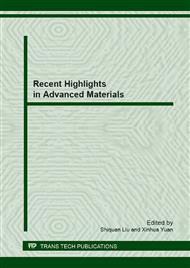p.410
p.414
p.418
p.423
p.427
p.434
p.441
p.446
p.453
Analysis of Silicone Rubber Elastomer Elastic Failure in Small-Size Flexible Joint at Low Temperature
Abstract:
In order to study the performance on silicone rubber elastomer in small-size flexible joint at different temperatures, a series tests for two miniature flexible joints (joint-SR1 and joint-SR2) with the same structure and different formula of silicon rubber elastomer (phenyl silicon rubber and dimethyl silicon rubber) were conducted. Axial compressive stiffness and bending stiffness at various temperatures (-60 °C~20 °C) and vessel pressures (1MPa~8MPa) were studied. Results show that the axial compressive stiffness and bending stiffness of joint-SR1 remain stable throughout the temperature range of-60 °C~20 °C, while those remain stable throughout the temperature range of-40 °C~20 °C and become to be infinite at-50 °C due to the elastic failure of elastomer material for the joint-SR2. Analysis indicates that the reason that elastomer of joint-SR2 lost elasticity at-50 °C is not glass-transition but crystallization. The phenomenon of elastic failure did not appear throughout the temperature range-60 °C~20 °C for the joint-SR1 elastomer is due to the existence of phenyl side-group substitute. The modified chain content of silicone rubber not only affects the process of crystallization inhibition but also the crystallization rate. The rubber with phenyl or other bulky side-group could destroy the crystal of silicone rubber at low temperatures, which is beneficial to be applied in small-size flexible joint.
Info:
Periodical:
Pages:
427-433
Citation:
Online since:
September 2013
Authors:
Price:
Сopyright:
© 2014 Trans Tech Publications Ltd. All Rights Reserved
Share:
Citation:


